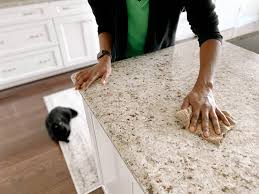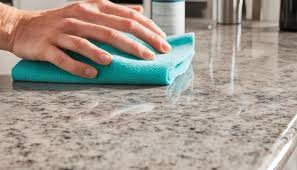The Ultimate Guide to Furniture Cleaning: Tips and Tricks for Every Material
Furniture plays a crucial role in shaping the ambiance of a home, but keeping it clean can be a challenge. Different materials require unique cleaning techniques to maintain their beauty and longevity. From fabric upholstery to wooden surfaces, understanding the right approach ensures that furniture remains in pristine condition for years. This guide explores essential cleaning methods for various materials, helping homeowners preserve the quality and appearance of their furnishings. Check out the latest updates on furniture cleaning here.

Understanding the Importance of Proper Furniture Cleaning
Furniture accumulates dust, dirt, and stains over time, affecting both its appearance and durability. Regular cleaning prevents the buildup of allergens, extends the lifespan of materials, and keeps the home environment fresh. While many homeowners resort to generic cleaning products, using the wrong solution can damage surfaces and fabrics. Knowing the proper techniques for each type of furniture material is essential for effective maintenance.
Cleaning Fabric Upholstery
Fabric-covered furniture, such as sofas and chairs, is prone to stains and dust accumulation. To keep fabric upholstery fresh, regular vacuuming is essential. It removes dirt particles that can cause fabric to deteriorate over time. When dealing with stains, using a gentle upholstery cleaner or a mixture of mild detergent and water can help lift marks without damaging the fibers. Spot testing a small, inconspicuous area before applying any cleaning solution ensures that the fabric does not discolor or react negatively to the treatment.
For deep cleaning, steam cleaning is an effective method that removes embedded dirt and bacteria. However, it is important to check the manufacturer’s guidelines, as not all fabrics can withstand high heat. Proper drying is also necessary to prevent mold and mildew from forming on damp upholstery.
Maintaining Leather Furniture
Leather furniture adds elegance and sophistication to any space, but it requires specialized care to maintain its texture and appearance. Unlike fabric, leather is susceptible to drying out and cracking if not properly conditioned. Dusting leather furniture regularly with a soft, dry cloth prevents dirt buildup. For deeper cleaning, a damp cloth with a mild soap solution can be used, followed by a leather conditioner to restore moisture.
Harsh chemicals and excessive water should be avoided, as they can strip the natural oils from the leather and cause it to lose its luster. Spills should be wiped immediately to prevent stains from setting. With regular conditioning, leather furniture remains soft, supple, and free from cracks.
Caring for Wooden Furniture
Wooden furniture is timeless, but it requires proper maintenance to prevent damage from moisture, heat, and scratches. Regular dusting with a microfiber cloth keeps surfaces clean without causing abrasions. Using a mild wood cleaner or a mixture of water and vinegar can effectively remove dirt and grime while preserving the natural finish.
Wood polish enhances the furniture’s shine and provides a protective layer against dust. However, over-polishing can lead to buildup, making the surface appear dull. Protecting wooden surfaces from direct sunlight and placing coasters under beverages helps prevent discoloration and water rings. In case of scratches, using a wood marker or a small amount of olive oil can help minimize their visibility.
Keeping Metal Furniture Spotless
Metal furniture, commonly found in outdoor and industrial-style interiors, is prone to rust and tarnishing if not cared for properly. Regular cleaning with a damp cloth and mild soap removes dust and grime. To prevent rust, drying metal surfaces thoroughly after cleaning is essential.
For stubborn stains or rust spots, a mixture of baking soda and water can be applied to affected areas before gently scrubbing with a soft brush. Avoiding harsh abrasives ensures that the metal surface remains smooth and free from scratches. Applying a protective wax or metal sealant further enhances durability, especially for outdoor furniture exposed to changing weather conditions.
Handling Glass Furniture with Care
Glass tables and cabinets add a modern touch to home interiors, but they easily accumulate fingerprints, dust, and smudges. Cleaning glass furniture requires a streak-free glass cleaner or a simple solution of water and vinegar. Using a microfiber cloth prevents lint from sticking to the surface.
To avoid scratches, non-abrasive sponges or soft cloths should be used when wiping down glass surfaces. Placing protective pads under heavy objects prevents pressure marks, and handling glass furniture with care minimizes the risk of chipping or breakage.
Special Considerations for Wicker and Rattan Furniture
Wicker and rattan furniture are popular for their natural aesthetic, but they require delicate maintenance to prevent fraying and damage. Dusting with a soft brush or vacuuming with a brush attachment helps remove dirt from crevices. When deep cleaning is necessary, a damp cloth with mild soapy water can be used, ensuring that excess moisture is avoided to prevent weakening of the fibers.
Placing wicker furniture in well-ventilated areas reduces the chances of mold growth. Sun exposure should be moderate, as excessive heat can cause the material to become brittle. With proper care, wicker and rattan furniture maintain their rustic charm for years.
Preserving the Beauty of Stone and Marble Furniture
Stone and marble surfaces exude luxury but require gentle handling to prevent stains and etching. Acidic substances like vinegar or lemon juice should be avoided, as they can damage the natural finish. Instead, a pH-neutral stone cleaner or a mild soap solution is ideal for maintaining stone furniture.
To protect marble surfaces from stains, applying a sealant creates a barrier against spills. Wiping up liquid spills immediately prevents absorption into the stone. Using coasters and placemats further minimizes the risk of permanent marks, ensuring that stone furniture retains its polished appearance.
Read MoreThe Benefits of Regular Granite or Stone Countertop Cleaning: Why It Matters
Granite and stone countertops add elegance and durability to any kitchen or bathroom. Their natural beauty and resilience make them a popular choice among homeowners and designers alike. However, regular cleaning and maintenance are essential to preserving their longevity and keeping them looking pristine. Many people assume that because stone surfaces are strong and durable, they require little care. In reality, neglecting proper cleaning can lead to dullness, stains, and even damage over time. Understanding the importance of regular cleaning and how it contributes to the longevity of these surfaces can help homeowners maintain their investment and keep their countertops looking flawless.
Preserving the Beauty of Natural Stone
Granite and stone countertops are known for their luxurious appearance, with unique patterns and rich colors that enhance any space. However, without proper maintenance, these surfaces can lose their luster. Daily use exposes countertops to food spills, liquids, and other substances that can seep into the porous material if not properly sealed and cleaned. Over time, buildup from oils, grime, and residues can dull the surface, making it appear worn. Regular cleaning helps preserve the natural beauty of the stone, preventing discoloration and ensuring that the countertop retains its original shine and elegance. Visit our page on granite or stone countertop cleaning for detailed explanations and insights.

Preventing Stains and Etching
One of the biggest threats to stone countertops is staining. While granite and other stones are highly durable, they can still absorb liquids if left unsealed or if spills are not wiped up promptly. Acidic substances like wine, coffee, citrus juices, and vinegar can cause etching, leading to dull spots or damage to the stone’s finish. Regular cleaning, along with the use of a high-quality sealer, creates a protective barrier against these elements. Ensuring that spills are cleaned up quickly and using the right cleaning products can help prevent permanent stains and maintain the stone’s flawless appearance.
Protecting Against Bacteria and Germs
Stone surfaces, particularly in kitchens, are constantly exposed to food, spills, and bacteria. While granite and other natural stones are not inherently prone to harboring bacteria, improper cleaning can allow germs to settle into small pores or crevices. Using harsh or abrasive cleaners can also wear down the protective sealant, making the stone more susceptible to contamination. Regular cleaning with a gentle, pH-balanced cleaner helps maintain a hygienic surface, reducing the risk of bacteria buildup and ensuring a safe space for food preparation and daily activities.
Extending the Lifespan of the Countertops
Investing in granite or stone countertops is a significant financial decision, and proper maintenance plays a crucial role in protecting that investment. Regular cleaning helps prevent small issues from turning into major problems. For example, allowing debris, grit, or acidic substances to sit on the surface for long periods can lead to scratches, discoloration, or weakened areas. When countertops are cleaned consistently and properly sealed, they are more resistant to wear and tear, ensuring that they last for decades without losing their aesthetic appeal or functionality.

Avoiding Costly Repairs and Replacements
Stone countertops are highly durable, but neglecting maintenance can lead to costly repairs or even the need for replacements. Cracks, chips, and deep stains can be difficult and expensive to fix. In some cases, extensive damage may require complete resurfacing or replacement of the affected section. Regular cleaning and prompt attention to spills or minor damage help homeowners avoid these expenses, keeping their countertops in excellent condition for years to come. Proper care not only maintains the integrity of the stone but also saves money in the long run.
Choosing the Right Cleaning Products
Many homeowners make the mistake of using harsh chemical cleaners or abrasive sponges on their stone countertops. These products can degrade the sealant and cause dullness or etching. Instead, it is best to use a mild, pH-neutral cleaner specifically designed for natural stone. Warm water with a small amount of dish soap can also be an effective and safe option. Avoiding acidic or ammonia-based cleaners will help preserve the protective seal and maintain the natural shine of the stone. Soft microfiber cloths or non-abrasive sponges are ideal for wiping down countertops without scratching the surface.
The Importance of Sealing Granite and Stone Countertops
Sealing is an essential part of stone countertop maintenance. Since many types of natural stone are porous, they can absorb liquids, leading to stains and potential damage over time. A high-quality sealant acts as a barrier, preventing moisture and spills from penetrating the surface. Depending on the type of stone and its level of use, sealing may be required once or twice a year. Regular cleaning combined with proper sealing ensures that the countertops remain protected from daily wear and tear, preserving their beauty and durability.
Developing a Regular Cleaning Routine
Establishing a simple and consistent cleaning routine is key to keeping granite and stone countertops in top condition. Wiping down the surface daily with a gentle cleaner prevents buildup and keeps the stone looking polished. Spills should be cleaned up immediately to prevent staining, and occasional deep cleaning with a stone-safe product can help remove any residue or grime that accumulates over time. In addition, checking the sealant periodically and reapplying as needed ensures continued protection against damage and discoloration.
Read MoreHow to Make the Most of Your First Meeting with a Solicitor
Meeting with a solicitor for the first time can be a daunting experience, especially if you’re dealing with a legal matter that’s new to you. Whether it’s a personal injury claim, a business contract, or a family dispute, it’s essential to approach this initial meeting with preparation and clarity. Doing so will ensure you make the most of your consultation, saving both time and money while also setting the stage for a positive working relationship with your solicitor.
Here are some tips to help you get the most out of your first meeting with a solicitor:
- Do Your Research
Before your appointment, take the time to research the solicitor and their practice. Look for reviews or testimonials to ensure that they have the expertise to handle your case. Familiarize yourself with the type of legal matters they typically deal with, whether it’s personal injury, commercial law, family law, or another area. Knowing that your Solicitors has experience in the specific legal field you require will give you confidence and help you determine if they’re a good fit for your needs.
- Be Clear About Your Goals
Think about what you want to achieve in the meeting. Do you need legal advice? Are you looking to explore your options for a potential claim? Would you like to understand the process better? Clearly defining your goals will help guide the conversation and ensure the solicitor can address your needs effectively. If you’re uncertain, don’t hesitate to ask your solicitor to explain your options so you can make an informed decision.
- Gather All Relevant Documents
To ensure the Solicitors fully understands your case, bring along any documents or paperwork that are relevant to the issue at hand. This could include contracts, accident reports, medical records, emails, or any other paperwork that may help clarify your situation. The more information your solicitor has upfront, the better they can provide sound legal advice and a realistic assessment of your case.
- Be Honest and Transparent
Your solicitor is there to help you, and honesty is key to achieving the best possible outcome. Be open about the details of your situation, even if you’re worried about how it might affect your case. Remember that solicitors are bound by strict confidentiality rules, so you can trust them with your personal information. The more they know, the better they can advise you and create a strategy that works for you.
- Understand the Costs
One of the most important aspects of any legal matter is the cost. Before moving forward with a solicitor, make sure you fully understand their fee structure. Some solicitors work on a fixed fee basis, while others charge by the hour or on a contingency fee arrangement (particularly in personal injury cases). Be sure to ask about any potential additional costs and whether there will be an upfront deposit required.
- Take Notes
During the meeting, take notes on key points discussed, especially the solicitor’s advice, suggested next steps, and any other important details. This will help you refer back to the conversation later and stay organized as you move forward with your case.
- Follow Up After the Meeting
Once the meeting is over, don’t be afraid to reach out with any additional questions or clarifications. If you’ve agreed to send more documents or make a decision on how to proceed, make sure to follow up promptly. This helps maintain momentum and keeps the legal process moving forward.
The first meeting with a solicitor is a vital step in addressing any legal issue you may be facing. By coming prepared, being clear about your needs, and fostering open communication, you can make the most of this consultation and ensure your case is in good hands. A strong working relationship with your solicitor will not only help resolve your current matter but will also give you the confidence to navigate any future legal challenges.
If you’re looking for expert legal assistance, whether it’s for a personal injury case, family matter, or anything else, don’t hesitate to reach out to a solicitor who specializes in your area of need.
Read MoreWhat to Expect During Your First Meeting with Estate Agents
When you decide to buy or sell a property, your first meeting with an estate agent is a crucial step in the process. Whether you are a first-time buyer, a seasoned investor, or someone looking to sell a home, understanding what to expect during this meeting can help you feel prepared and confident.
Discussing Your Needs and Goals
Estate agents begin by understanding your requirements. If you are a buyer, they will ask about your preferred location, budget, and property type. If you are selling, they will assess your property, discuss pricing strategies, and outline the best ways to market it. This conversation helps both parties align expectations and ensures the agent provides relevant options.
Understanding the Market
One of the key aspects of your first meeting is getting an overview of the local property market. Estate Agents have valuable insights into current trends, pricing, and demand. They will provide an assessment of the market conditions and explain how these factors may impact your buying or selling process. For buyers, this information helps determine whether it is a good time to purchase, and for sellers, it guides pricing decisions.
Explaining the Process
 The process of buying or selling a property involves several steps, and your agent will outline these for you. Buyers will learn about mortgage pre-approvals, property searches, viewings, offers, and closing procedures. Sellers will receive a breakdown of property valuation, listing preparation, marketing strategies, negotiations, and completion timelines. Understanding this process from the start prevents confusion and ensures a smoother experience.
The process of buying or selling a property involves several steps, and your agent will outline these for you. Buyers will learn about mortgage pre-approvals, property searches, viewings, offers, and closing procedures. Sellers will receive a breakdown of property valuation, listing preparation, marketing strategies, negotiations, and completion timelines. Understanding this process from the start prevents confusion and ensures a smoother experience.
Reviewing Legal and Financial Considerations
Legal and financial aspects are an essential part of any property transaction. During the meeting, estate agents may introduce you to mortgage options, solicitors, or conveyancers who handle the legal side of the transaction. They will also discuss important paperwork, potential fees, and any government regulations that might affect the transaction. Being aware of these details early helps in making informed decisions.
Discussing Fees and Commissions
Estate agents typically charge commissions for their services, which can vary depending on the agency and market. Your first meeting is an opportunity to clarify these costs and understand what services are included. This can range from property marketing, negotiations, and paperwork management to after-sale support. Clear communication about fees ensures there are no surprises later in the process.
Setting Expectations for Communication
A successful property transaction requires good communication between you and your estate agent. During the initial meeting, you can discuss preferred methods of contact, response times, and how often you expect updates. Setting these expectations early ensures a smoother working relationship and allows you to stay informed throughout the process.
Viewing and Marketing Strategies
If you are a buyer, your estate agent will discuss how property viewings are scheduled and what to look for when inspecting homes. If you are selling, they will outline marketing strategies, including professional photography, online listings, and open houses. Understanding these strategies helps you gauge the effectiveness of your estate agent’s approach.
Addressing Any Questions or Concerns
Your first meeting is the perfect time to ask questions. Whether you are unsure about market conditions, legal requirements, or the selling process, estate agents are there to provide clarity. Do not hesitate to raise concerns so that you feel comfortable moving forward with your property transaction.
Read MoreThe Importance of Timely Siding Repair: Protecting Your Home’s Foundation

When it comes to maintaining the structural integrity of your home, one of the most crucial components often gets overlooked: the siding. Many homeowners may not realize just how vital their siding is in protecting the foundation of their homes. However, siding acts as a barrier against the elements, preventing water damage, pest infestations, and heat loss. Without timely siding repair, your home could be at risk for significant, costly damage. Here’s why addressing siding issues promptly is essential for the long-term health of your home. Looking for durable, high-quality asphalt shingles? Visit our website today to explore our top-notch products and get your project started!
The Role of Siding in Protecting Your Home
Siding serves as the first line of defense against the weather. It shields the underlying structure of your house from rain, wind, snow, and other environmental factors. A well-maintained siding system keeps the exterior of your home dry and insulated, which plays a significant role in protecting your foundation. If siding becomes damaged or deteriorates, it can allow water to seep into the walls, eventually compromising your foundation.
Additionally, your siding helps in maintaining the internal temperature of your home by insulating the structure. This means your home stays cooler in the summer and warmer in the winter, which can lead to savings on your energy bills. When the siding is compromised, the insulation efficiency is reduced, and energy loss increases.
Why Timely Repair Is Crucial
Timely siding repair can save homeowners from significant damage down the road. Here are several reasons why prompt action is essential:
- Preventing Water Damage
One of the most common issues caused by damaged siding is water infiltration. Whether it’s cracked, rotted, or loose, any issue with your siding can allow rainwater to penetrate into the walls of your home. Over time, this can lead to mold growth, rotting wood, and even structural damage to the foundation. Water damage can spread quickly, affecting both the interior and exterior of your home, and leading to expensive repairs.
- Avoiding Pest Infestation
Damaged siding can also create entry points for pests like insects, rodents, and other wildlife. Once pests find a way inside, they can cause damage to both your home’s structure and insulation. The longer these pests are allowed to invade, the more difficult and expensive it can be to eliminate them.
- Maintaining Home Value
Your home’s curb appeal plays a significant role in its overall value. Damaged siding can make your house look worn out and unappealing, potentially lowering its market value. Timely siding repair helps keep your home looking fresh and well-maintained, which is important whether you’re selling or simply want to enjoy a beautiful living space.
- Protecting the Foundation
The foundation of your home is the most critical aspect of its structure. Without a solid foundation, the integrity of your entire house is at risk. Damaged siding can lead to moisture buildup, which, over time, can compromise the foundation’s stability. Water infiltration can lead to soil erosion or cracks in the foundation, which may require costly repairs. Addressing siding issues early can help protect your foundation and avoid these expensive fixes.
Signs Your Siding Needs Repair
Knowing when to repair your siding can make all the difference in preventing costly damage. Here are a few signs that indicate it’s time to take action:
Visible Cracks or Holes: Cracks and holes allow water, pests, and air to enter your home, causing further damage.
Warping or Buckling: If the siding is warped, buckled, or detached, it may no longer be functioning as a protective barrier.
Peeling Paint or Discoloration: If the paint is peeling or the siding is discolored, it could be a sign of water damage or prolonged exposure to the elements.
Visible Mold or Mildew: Mold and mildew growth on your siding indicate excessive moisture, which could be causing hidden damage inside your walls.
Increased Energy Bills: If your energy bills suddenly increase, it could mean that your siding is no longer properly insulating your home.
How Timely Repair Benefits Your Home’s Longevity
By addressing siding issues early, you can extend the lifespan of your home’s exterior and foundation. Timely repairs ensure that your siding continues to function as intended, maintaining both the appearance and structural integrity of your home. This not only keeps your family safe and comfortable but also saves you money in the long run by avoiding expensive repairs.
Regular maintenance and timely repairs to your siding can also prevent costly issues with your roof and foundation. By taking care of small problems before they become major concerns, you ensure that your home remains a safe, secure, and valuable asset for years to come.
Social Profiles:
yelp : https://www.yelp.com/biz/evergreen-exteriors-boise-3
facebook : https://www.facebook.com/p/Evergreen-Exteriors-Roofing-Siding-100093633170696/
youtube : https://www.youtube.com/@EvergreenExteriors
Read MoreRecent Posts
- The Ultimate Guide to Furniture Cleaning: Tips and Tricks for Every Material
- The Benefits of Regular Granite or Stone Countertop Cleaning: Why It Matters
- How to Make the Most of Your First Meeting with a Solicitor
- What to Expect During Your First Meeting with Estate Agents
- The Importance of Timely Siding Repair: Protecting Your Home’s Foundation


